- The Best Empty Flip Top Bottles for Home Brewing - May 18, 2022
- The Best Kegerator Conversion Kits Worth Buying - May 18, 2022
- Secondary Fermentation Explained: Is It Worth The Effort? - September 16, 2021
There’s a lot of confusion surrounding secondary fermentation, what it is, and how it works. There are cases in which secondary fermentation is necessary, and in others, it’s not. There are also some risks associated with it that you should know about before you begin. Here’s our full guide to fermentation where we have secondary fermentation explained before you get on this process.
What is Secondary Fermentation?
Secondary fermentation happens after you transfer the beer you already fermented into a secondary container. While it’s called secondary fermentation, there’s actually not much yeast activity in this phase.
Secondary fermentation is also called the conditioning phase. Once you transfer your beer to a secondary vessel, the aromas and flavors will mellow as the yeast drops. This produces a clearer final result.
If your beer has an original gravity of 1.04 or less, this step won’t be necessary because these types of beers are served cloudy. This process is reserved for highly hopped or high gravity beers that need to age before achieving their peak aroma and flavor.
However, secondary fermentation can also be used when you add oak chips or dry hops after the primary fermentation process.
Secondary fermentation can last anywhere from one week to 6 months. The time varies depending on your personal taste. Only you can determine when your beer is ready to be bottled.
You may need to check on your airlock occasionally to make sure it doesn’t dry out during long secondary fermentation phases. A bubbler airlock is the best option for secondary fermentation phases to prevent this.
Despite its purpose, many brewers believe this secondary fermentation phase is unnecessary and that extending your primary fermentation for another 3-4 weeks will give you the same result. There aren’t enough studies to know if this is true, but it could be a reasonable alternative to transferring your beer to a secondary before you bottle it.
Primary vs Secondary Fermentation
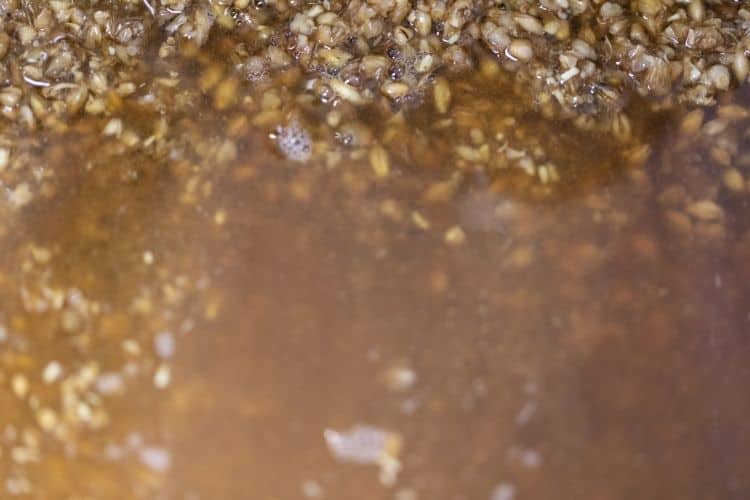
Many get confused about the difference between primary and secondary fermentation, and it’s often confused with malolactic fermentation or a legitimate second fermentation. However, secondary fermentation is not actually fermenting your beer a second time.
Primary Fermentation
Primary fermentation starts as soon as you add your yeast. During primary fermentation, your yeast population grows rapidly. You’ll see a lot of visible activity with loads of foam on the top. Your airlock will bubble almost constantly.
Because the fast-growing yeast just came across a huge amount of oxygen, sugar, and nutrients, everything is reacting. The most active phase of your fermentation will also be the most productive. Nearly 70% of the total alcohol produced is in this phase, which typically only lasts 3-5 days!
As oxygen is depleted and most of the sugar is used, things will slow down. The yeast is no longer expanding because the alcohol levels have made it difficult for the yeast to survive, let alone reproduce.
Cells are dying and pooling at the bottom of your vessel. It’s now time to rack the suspension so you don’t pick up flavors from the dead yeast, and then move on to secondary fermentation.
Secondary Fermentation
This phase can last from one week to 6 months, depending on the flavor and aroma you want to develop or the transparency you want to achieve. Secondary fermentation is much slower than primary fermentation and will produce the last 30% of alcohol in your beer.
As the foam disappears, little bubbles will break at the top. Instead of bubbling constantly, the airlock will only bubble every 30 seconds.
There’s no event, other than transferring vessels, that will distinguish the secondary phase from the primary. It just depends on your beer, so you need to monitor your airlock and the activity level at the surface.
Secondary Fermentation vs Second Fermentation

Fermenting your alcohol a second time is when excess sugar that wasn’t consumed by the yeast the first time starts the fermentation process over. While some people confuse this with malolactic fermentation, it’s not the same.
Malolactic fermentation is the process of converting malic acid to lactic acid.
However, true secondary fermentation isn’t fermenting a second time at all. It’s simply filtering the yeast out and letting it drop to the bottom. As this happens, the flavor and aroma will mellow and the suspension will become less cloudy.
Rather than calling it secondary fermentation, some prefer to call it conditioning, because there’s not much material left for fermentation anyway. Instead, it cleans up undesirable compounds that were created during primary fermentation and even out harsh flavors.
Arguments for Using a Secondary Vessel
Many people disagree about whether the secondary fermentation process should happen in the same vessel as primary fermentation. The term secondary fermentation is also sometimes used to mean the beer is being transferred to a different container.
The benefit of this is that your final beer will be clearer. However, using a second vessel really only needs to be considered under a few circumstances.
Brewing High Gravity Beer
Beer that has a greater alcohol content than 8% takes longer to ferment. After your primary fermentation when the yeast settles, the dead cells can cause unpleasant flavors in your beer. Racking the beer into a second fermenter can rid the suspension of the material that produces these flavors and give you a better final result.
Fermenting with Hops, Wood, or Fruit
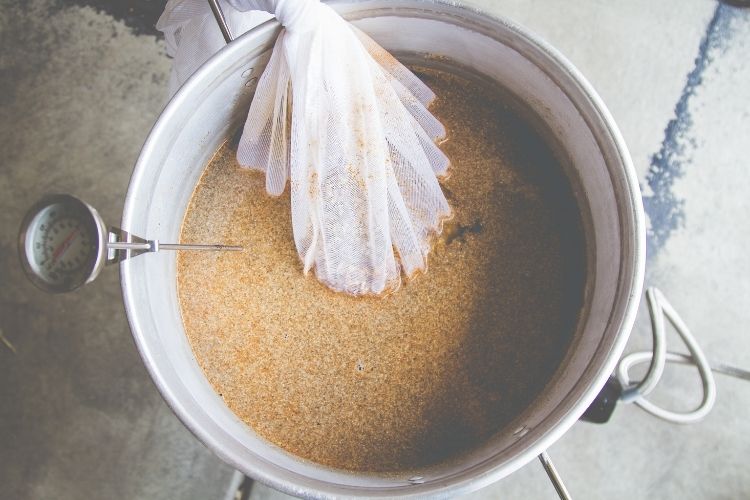
If you add things to your beer, you should add it after primary fermentation is complete. When you’re dry hopping, you can’t sterilize the hops first, so adding them after alcohol is present minimizes your risk of infection.
It’s cleaner and easier to introduce hops or fruit in a secondary vessel and then syphon the beer onto them. They won’t get caught in the trub, which would make the entire process more messy and difficult later.
Because you should keep wood chips or fruit in your beer for more than 2-3 weeks, it’s better to use a secondary fermenter because it reduces the risk of odd flavors.
Why Use a Secondary Fermentation?
The main benefit to using a secondary (or tertiary) fermentation is that it separates your beer and the sediment soon after the active fermentation phase. Dead cells, hops, and grains will impart undesirable flavors if they’re in there for too long.
Secondary fermentation also gives the brewer better opportunities to harvest the yeast and reuse it.
Pros
- Lessens exposure to dropped yeast and sediment – After a couple of weeks, your yeast will break down and give off flavors to your beer. Homebrewers don’t ferment beer for long enough to cause any glaring problems, but if you do leave your beer for a long time, secondary fermentation is recommended.
- The beer will mature – Secondary fermentation gives your beer time to blend yeast, hops, and malt into a good, balanced flavor.
- Improves clarity – Secondary fermentation reduces the amount of sediment in your beer, giving you a clearer result. There’s more time for the yeast, protein, and hop trub to fall out. If you add a fining agent like gelatin, it can help this process.
- Allows for dry hopping – If you want to add dry hops to your beer, you need to use a secondary fermenter to do it. It can increase the aroma of your beer. You can also add flavors, spices, wood chips, fruit, and other additives at this stage.
Craft and Pro Breweries
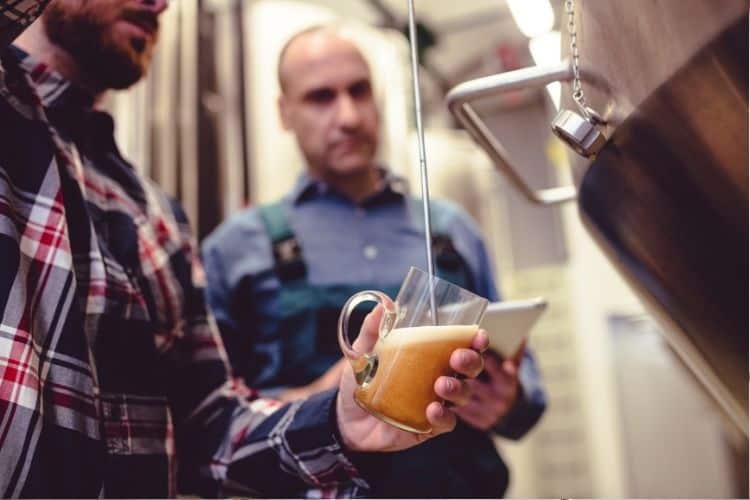
Craft and pro breweries have the added benefit of higher quality resources, which eliminates the need for a secondary fermentation. If you’ve ever been to a commercial brewery, you’ve seen the conical-shaped fermenters.
The cone shape allows yeast to collect at the bottom so it’s easier to filter out later. It also minimizes the amount of beer that has contact with the sediment at the bottom of the fermenter.
Because of this design, it doesn’t need to be transferred to another tank to separate it. They simply open the cone at the bottom and let the sediment drain out. This also allows them to harvest the yeast.
Why Not to Use a Secondary Fermentation
In home brewing, secondary fermentation exposes a few risks. As you siphon your beer into a second container, it could splash, exposing it to oxygen. Even a small amount of oxygen can ruin the stability of your beer long-term.
You also run the risk of contamination. Even if you use the best sanitation practices, you can still contaminate your suspension.
The final risk is up for debate, but many home brewers believe that if you’re using modern brewing techniques and ingredients with a robust, active yeast, your sediment won’t be a problem.
The right mash pH and a long boil will reduce your chances of excessive sediment or tannin problems. A healthy yeast and a good yeast starter won’t hurt your beer, even if you leave them in contact with one another for a few weeks.
Cons
- Takes more time and effort – It takes time and care to transfer or rack beer into a second vessel. Your setup will impact how long it takes.
- Risk of contamination – Opening your fermentor and transferring your suspension increases your risk of wild yeast or bacteria getting into the beer. Practicing good sanitation is critical for secondary fermentation.
- Loses hop flavor – The flavor of your hops will lessen over time. In many cases, just a few weeks doesn’t make a difference, but when brewing hop-forward beer, secondary fermentation could produce an undesirable result. Consider the length of your fermentation carefully.
- Delays drinking – The final reason why you might not want to conduct a secondary fermentation is because it simply means you have to wait longer to drink your beer!
Product Recommendations
If you’re considering working with secondary fermentation, you need the right kind of container. Here are some options that you should look into if you want to process your home brew this way.
Northern Brewer FastFerment 3-gallon Conical Fermenter
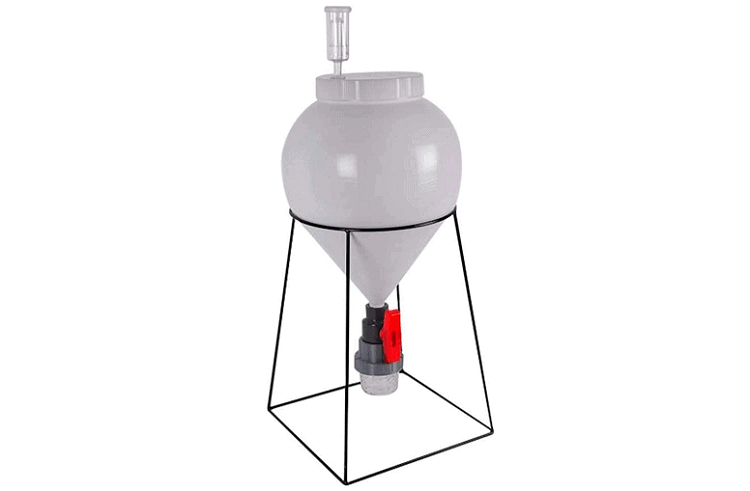
This is a great affordable solution for home brewers everywhere. It has a small capacity, but the conical shape allows you to reduce contact with sediment. You can actually conduct every fermentation stage in this single vessel.
By removing the tub from the bottom, you don’t need to transfer the liquid to a secondary vessel. This reduces your risk of contamination, oxidization, and spilling. It has a removable screw top lid that makes it easy to clean or add dry hops during secondary fermentation.
It’s also well suited for homemade wine or cider, so you’ll get plenty of use out of it. The optional thermometer is a nice touch, making it easy for you to directly monitor the temperature of your fermentation.
SS Brewtech: The Chronical
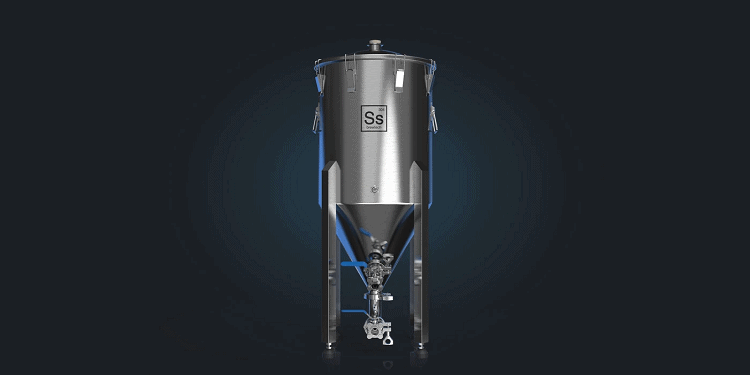
This 7-gallon flagship fermentor, designed by SS Brewtech is a step up from nearly every other conical tank, but still comes at an affordable price. It has a 60-degree cone and a 1.5-inch opening.
Dumping your trub is a breeze, so you don’t have to transfer to a secondary vessel. The welded fittings prevent corrosion, so your brews will be sanitary and delicious. There’s also a Rotating Racking Arm that allows you to rack your beer, even if the trub is high.
The thermowell allows you to monitor and control temperature with ease while the lid is easy to remove for cleaning or adding dry hops. It’s sealed with a gasket and secured with 6 spring-loaded clamps. It can be pressurized up to 5 PSI.
The stainless steel legs are sturdy. They keep your brew off of the ground and make it easy to rack, dump, or clean. You won’t find these features at this price tag from any other manufacturer.
CF5 Spike Conical Unitank
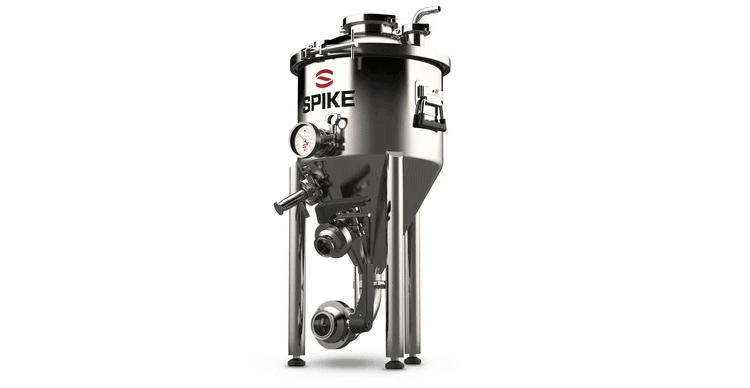
If you really want to step up your brewing game, Spike offers products that are legendary. You can get upgradable products that allow you to develop your brewing game over time, or you can simply spring for the best on day one.
The 304 stainless steel construction with sanitary welded ports ensures that your brew will be sanitary and delicious. They offer tanks from 7-40 gallons, all capable of 15 PSI. There are etched volume markings that make it easier for you to read.
The polished finish looks gorgeous, but it’s a highly functional tank that allows you to conduct all of your fermentation stages. The lid is removable for easy cleaning and also contains a 4-inch port for dry hop additions, top sight glass, and a temperature control port.
It features a blow off port as well as a dedicated pressure relief valve. The huge 2-inch bottom dump has butterfly valves, so you won’t have to worry about yeast getting stuck. A thermometer allows you to monitor the fermentation temperature at all times.
These tanks come at a price, but they’re well worth it because they’re easy to use, sanitary, and offer more features than nearly any other manufacturer.
FAQ
The confusion you may feel about secondary fermentation puts you in a category with many others who don’t quite understand either. These frequently asked questions may help clear it up.
Question: How Does Secondary Fermentation Work?
Answer: Secondary fermentation involves moving your beer from the primary fermentation vessel to another container. Usually, home brewers use a glass carboy. The aging period in secondary fermentation ranges from one week to 6 months.
Question: What’s the Point of Secondary Fermentation?
Answer: Simply put, secondary fermentation will remove additional sediment, prevent odd flavors, and make your beer less cloudy. The purpose is to facilitate yeast settling and allow the beer to age. By transferring it to a secondary container, you remove the accumulated sediment.
Question: Do You Need Secondary Fermentation?
Answer: The short answer is no. There are only a few cases in which you really need a secondary fermentation. If you start with good techniques and high-quality ingredients, it’s largely unnecessary.
If you do plan to leave your beer in the primary fermenter for longer than it really needs, use pure yeast strain and a good starter to eliminate the need for a secondary fermentation. You can just leave it in your primary and let it go.
Question: How Do I Know When Secondary Fermentation is Done?
Answer: Measuring the specific gravity is really the only easy to be sure your secondary fermentation is done. Take a sample of your beer 10 days after pitching the yeast and measure the gravity. Take another reading on day 12. If both readings are the same, your secondary fermentation is complete.
Question: Can You Add Yeast to a Secondary Fermentation?
Answer: Adding dry yeast to your secondary fermentation is rarely necessary, and you shouldn’t do it. You can add flavors, spices, wood chips, dry hops, or fruit to your secondary can impart additional flavor, but you don’t need yeast.
Which is Right For You
The bottom line is that secondary fermentation can be useful in some cases, but you need to weight the risks and benefits yourself. By conducting a secondary fermentation phase, the average home brewer takes on a larger risk than they would by leaving their beer in the primary fermentation vessel for longer than needed.
However, if you do leave your beer in the primary fermenter for too long, you may get undesirable flavors that you don’t like. Just be aware that you’re exposing your beer to oxidation and contamination.
If you want to avoid the issue altogether, use a conical fermenter at home. You can find affordable options for home brewers that will allow you to conduct your primary fermentation and remove the sediment with ease.

